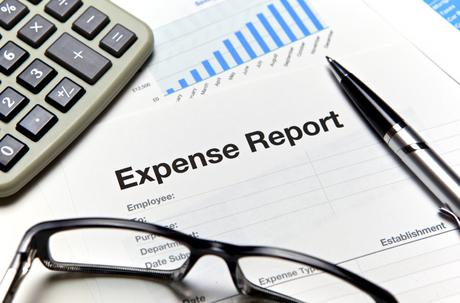Manual expense reporting is so daunting and chaotic that there are innumerable reasons for organizations to switch to automated expense reporting. Some of the reasons like timely submissions and participatory review process have been listed in this post, and we will include and expand them in this more comprehensive post. So, here are some reasons why you should automate your expense reporting process:

Quick Processing
One of the biggest drawbacks of traditional expense reporting processes is the processing time. Employees would have to wait a long time after submitting their expense reports to get their reimbursements since processing takes up so much time, making the process inefficient and ineffective. By automating some of the tasks and by removing the waste in the process, expense software allows for quick and efficient processing, which not only significantly reduces the time it takes for reimbursement but also ensures that tasks are completed in time.
Better collaboration and service delivery
In a process like expense management where several stakeholders such as employees, finance professionals, and managers have to work together, there is a great need for effective collaboration, which is sorely lacking in traditional paper-based processes. Since employees do not have a common platform to work on, and since stakeholders from different departments use their own systems and tools, collaboration is hard to achieve, and can be quite time-consuming.
The expense management process involves stakeholders treating one another as internal customers, and when there is lack of collaboration, service delivery takes a hit. Ineffective service delivery at one stage bull whips into others, and soon, the entire process will be difficult to manage.
Therefore, collaboration is important, and this collaboration can be achieved by offering all the stakeholders a single platform to work on. By standardizing the whole process thus, better collaboration and service delivery can be achieved.
Data entry
With expense software data entry can also be automated. Gone are the times when data entry is to be made in hand -- today, with expense software, expense reports fill themselves almost completely, and employees are only left with approving the final report and submitting the same.
This automation can happen in two ways -- either the software can be integrated with booking solutions for flights, hotels, and such, and allow for automated data transfer, or the employees can automatically digitize and store receipts and receipt data with OCR technology.
Either way, the pertinent fields in the expense report are filled in, and the huge and time-consuming burden of data entry is taken off the shoulders of employees, leaving them with time to focus on more important things.
Standardization
With automation of the expense report process, you have standardization, which can be very important in improving the efficiency of the process. Without standardization, you would have to suffer from expense reports that have been prepared haphazardly, and processes that are run more in an ad hoc manner which makes them inefficient.
Lack of standardization also hurts productivity, and needs that much more time from the stakeholders to complete their tasks. Standardization can also help eliminate most of the pains in the expense process.
Analytics
One of the most significant difference makers in the way your expense reporting process is carried out, analytics can help organizations achieve savings that they did not even know existed.
Analytics uncover patterns and anomalies and ensure that action is taken to eliminate any flaws or inefficiencies in the process. And unlike traditional processes where resources had to be dedicated to mine data from spreadsheets and make painful calculations, expense software allows you to automate your analytics and get detailed and comprehensive reports sent directly to your mailbox.
For example, say you wanted to know how many expense reports are submitted in a given period of time or how much time it takes for an expense management professional to process a given number of receipts. you only need to click a few buttons in the solution, and once you find what you wanted, you can get these delivered automatically periodically.
So, first thing Monday morning, you automatically have these details for the previous week waiting in your Inbox.
Another important benefit of analytics and automation is that employees at all levels are clued in. Everyone knows what's going on in the process, and therefore, the process is run that much more smoothly.
Validation & approvals
Validation and approvals are often the biggest culprits in delaying the expense management process and making it inefficient. Of course, one cannot blame the stakeholders too much since the nature of the process is such.
Both employees and supervisors cut corners here, and as a result, fraud and misappropriation happens. To ensure that this does not happen, expense software automates these processes and reduces the time taken by supervisors on these tasks is reduced exponentially while ensuring that nothing is compromised upon.
Also, in ensuring that approvals do not face any obstacles, features like delegations are very helpful. Whenever employees are overloaded with work or if they are on time off, they can delegate their tasks to their peers so that there are no delays here. Also, approval routing, however simple or complex can be automated. If you want more than one approval for an expense report, you can implement the same flow in the software. Also, you have the choice to have simultaneous or sequential approvals flows as you need.
Communication
Communication in the expense management process can also be automated using expense software. Often, tasks are delayed not because employees did not complete their tasks in time but because they did not convey the same to the one who has to take up processing next.
They often miss sending a mail or notification, and as a result, reports stay in inboxes without ever getting processed. This communication can be automated, and as a result, processes can be completed in time, using expense software.
Seamless data transfer
The expense management system is not an island -- it needs data from other tasks, and offers data to other tasks. In preparing the expense report, employees would need their travel and entertainment data, and in making the reimbursement, financial professionals need validated expense reports.
This data transfer among business units and stakeholders is quite strained in organizations which use traditional processes, and often, these have to be done manually, leading to further delays and giving scope for errors. If you can integrate your expense system with the other systems which are stakeholders in the process, you can enjoy automated data transfer which is consistent and error-free.
Policy enforcement
Not only is policy enforcement cumbersome, but it cannot be adequately implemented with traditional processes which offer poor control and visibility. Policy enforcement goes the same way as validation -- corners are cut and processing is done in a hurry.
There are no penalties for violators, and poor implementation often leads to brazen and blatant violation of policies. By using expense software, you can automate policy enforcement. Since prevention is often better than cure, the software helps prevent violations from occurring instead of having to take remedial action later.
While preparing an expense report, the software will not allow employees to enter illegal or out-of-policy entries. Say you have a policy that an employee can only spend so much on a particular category of expense in a given period of time, you can limit the entry in that field to that amount.
Even if the employee tries to enter more than the limit, the software will not allow the same, and there is no overriding it. Similarly, other aspects of the policy can be coded into the software to ensure prevention of violations.
Fraud prevention
One of the good side-effects of centralization, increased transparency and visibility in expense management operations, and automated policy control is the prevention of fraud and misreporting.
Since the entire data is available in the solution, and since all the stakeholders have total visibility in operations along with transparency in processing, there is no scope for fraud or misreporting. Automation also allows simple and comprehensive audits, which can be reported to all the pertinent stakeholders as and when the need arises.
By automating their expense processes using expense report software, organizations can enjoy a host of benefits not limited to the above. The whole process becomes easier to manage, and employees can complete their tasks in comfort and convenience, knowing that they will be updated in real-time about the status of each task.
The benefits of automation significantly outweigh costs, and allow organizations to have expense processes that are efficient and do not strain employees in managing them. So, enough spreadsheet processing – it is time to move into the future with specialized software that can help you realize more from the process and reduce risks and uncertainties.
Author Bio:
James Maron is an author at SutiSoft, Inc. He shares his views on SaaS and Cloud-based business management solutions.

